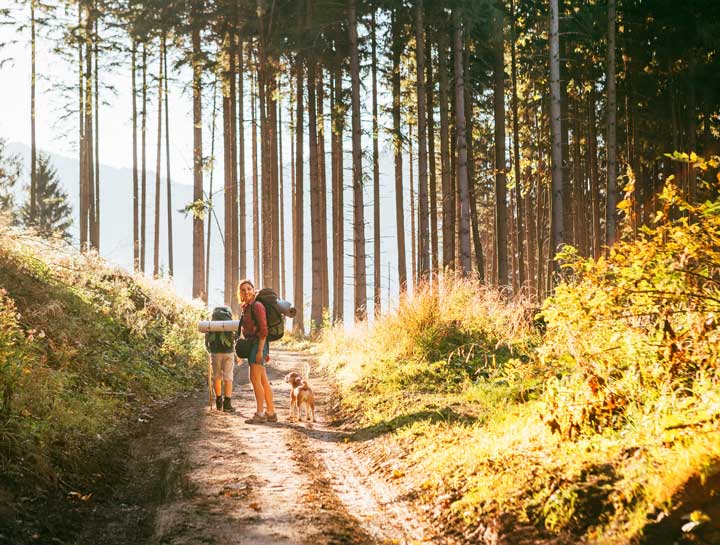Hiking With Your Dog: How to Keep Your Dog Safe on Colorado Trails

Watch out for these trail hazards
If you’re new to Colorado or a first-time dog parent, you’re going to LOVE hiking in Colorado with your dog.
But hiking in Colorado is different than hiking in other parts of the country.
Whether you’re exploring the paths around Castle Rock or trekking through the mountains, there are certain things to watch out for, so you can keep your dog safe.
Foxtail seeds
You’d think we’d lead with something epic… like mountain lions!
But no, we’re starting with grass seeds. Foxtails, to be exact.
These seeds can be a pain for your dog, especially from July through October.
Foxtails are grassy weeds that grow in native grasses.
You’ll find them in the open spaces around Castle Rock, along local trails, and even along Plum Creek.

Foxtail seeds can be a hazard for your dog because they latch onto your dog’s fur or skin and work their way inward.
The best way to prevent foxtail seeds is to keep your dog out of uncut grasses and weeds.
After a hike, always check your dog’s ears, nose, and paws for seeds.
Check out: Foxtails in Colorado dogs: How to protect your pup
Dehydration/heat exhaustion
Because Colorado has such a dry climate, our weather can be deceptive.
If you’re out hiking with your dog, it may seem like you aren’t even sweating!
It’s important to know, though, that dehydration and heat exhaustion are both real risks for your pup.

Dogs cool off through panting… and panting causes them to lose moisture.
Here’s what you can do to help keep your dog hydrated and rested.
Check out: Overheated dogs: Tips to avoid dehydration and signs to watch for
Hot pavement or rough trails
No matter how tough your dog’s paw pads are, pavements can burn — even on 70-degree days.
And rocky trails and open spaces offer hazards for your dog’s paws.
The good news is there are things you can do to keep your pup’s paws in good shape.
Check out: How to protect your dog’s paws from hot pavement and rocky trails

Ticks
Colorado doesn’t have nearly as many insects that affect dogs as in other parts of the country.
(For example, fleas aren’t as much of an issue in Castle Rock as they are in more humid climates.)
But if your dog is forging trails through the woods or grassy areas, your dog may encounter a tick.
Check out: How to protect your dog from ticks in Colorado
Leptospirosis
Leptospirosis is a bacterial disease that can affect dogs and people. Our vets see the most cases of it in the summer and in the fall.
Leptospirosis is spread through the urine of infected raccoons, skunks, livestock, rats, and other animals.
Your dog can get the disease by:
- Drinking or wading into infected water
- Sniffing the urine of infected animals
Keep your dog’s vaccinations up-to-date, and keep your dog out of streams and stagnant water. You’ll go a long way toward keeping your dog healthy!
Check out: Important dog immunizations for summer in Colorado
Wildlife encounters
And finally, we end where we almost started: wildlife encounters.

Wildlife tends to be most active at dusk and dawn, rather than during the day. And many of our Castle Rock hiking trails have decent, daytime foot traffic on them.
So the good news is, you may never run into wildlife.
With that said, it’s best to know what to do if you and your dog do encounter a coyote, mountain lion, or something else.
Colorado Parks & Wildlife has put together some useful tips:
Use these tips to feel empowered
As Benjamin Franklin said, “An ounce of prevention is worth a pound of cure.”
(Or a pound of veterinary bills!)
Use these tips to prepare for fun hiking experiences, and you’ll be in a better position to keep your dog happy and healthy.
